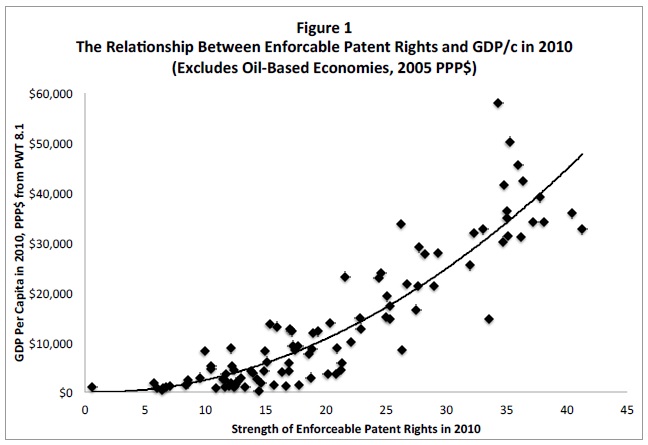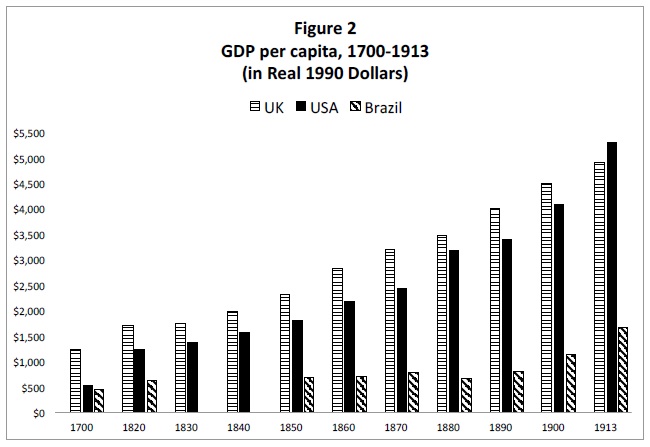The following post comes from Colin Kreutzer, a 2E at Scalia Law and a Research Assistant at CPIP.
 By Colin Kreutzer
By Colin Kreutzer
The LeadershIP conference is dedicated to promoting an open dialogue on global issues surrounding innovation, intellectual property, and antitrust policy. On September 10th, LeadershIP kicked off its 2020 series of virtual events with a panel discussion featuring three government agency leaders: PTO Director Andrei Iancu, NIST Director Walter Copan, and Assistant Attorney General Makan Delrahim of the DOJ’s Antitrust Division.
Moderator David Kappos, a former PTO Director and current partner at Cravath, Swaine & Moore LLP, led a discussion about the role of standard-essential patents (SEPs) in modern industry and the legal effect that an SEP designation has on patent owners. The main topic of discussion was the importance of retaining the right to injunctive relief against infringers. The panelists had released a joint statement on this subject last year, following some unwelcome court decisions and what they viewed as misinterpretations of an earlier statement from 2013. View the video of the panel discussion here.
SEPs and F/RAND
The adoption of industry-wide technical standards helps industries to thrive by promoting efficiency and interoperability among competitors. A group that authors such standards is known as a standards developing organization (SDO), and it can include representatives from governments, private companies, and universities all over the world. For example, mobile communications standards such as 4G broadband technology are developed by the ITU, a group within the United Nations.
Developing a complex technical framework necessarily involves the use of many patented technologies. When the use of a certain patented technology is essential for adhering to the industry standard, it is known as a standard-essential patent.
Since owning an SEP can give the patent owner leverage over an entire industry, SDOs often require an agreement from patent owners before electing to use their technology in the standard. To be included, owners must commit to licensing their invention to all interested parties on terms that are fair, reasonable, and non-discriminatory (FRAND). Some forms of this agreement omit the word “fair,” leaving only “RAND.” They can be collectively referred to as F/RAND commitments.
Holdup and Holdout
The combination of public standards and private property rights can create perverse incentives for both patent owners and technology implementers alike. Once a company is bound to an industry standard, a patent owner may refuse to honor its F/RAND commitment and demand licensing fees that are grossly disproportionate to the patent’s actual value. A practice like this is known as “holdup.” But the presence of F/RAND agreements can encourage the licensee to practice “holdout” as well. In that case, a company will simply use the technology without paying any fees, ostensibly because the owner would not agree to fair and reasonable terms. Holdup and holdout can both weaken standard-setting efforts by breeding distrust and discouraging participation.
The panelists talked about the chain of events that they feel resulted in too much emphasis on preventing holdup at the expense of giving holdout a green light.
The 2013 and 2019 Letters
In 2013, the PTO and DOJ released a joint policy statement on the issue of appropriate legal remedies for SEP owners. The statement said it may not always be proper seek an injunction in a district court or to ban importation of products using an exclusion order at the International Trade Commission. Citing “an effort to reduce . . . opportunistic conduct” and the need to “provide assurances to implementers of the standard that the patented technologies will be available,” the letter suggested that a voluntary F/RAND commitment may imply that “money damages, rather than injunctive or exclusionary relief, is the appropriate remedy for infringement in certain circumstances.” The letter indicated that, at least under certain circumstances, no remedies should be available that would halt the actual flow of products or impede the implementation of a technical standard. Instead, the SEP owners could expect only monetary judgments that would be decided after the fact.
In the years following this statement, several court decisions were handed down denying injunctive relief in SEP infringement cases. In Apple v. Motorola for example, the N.D. Illinois court reasoned that when an SEP owner commits to licensing its patent to everyone, the dispute narrows to one of price: “[b]y committing to license its patents on FRAND terms, Motorola committed to license the [patent] to anyone willing to pay a FRAND royalty and thus implicitly acknowledged that a royalty is adequate compensation.” On appeal, the Federal Circuit objected to this rationale as a per se rule, but it upheld the denial of injunctive relief all the same.
The agencies became concerned that an entirely different legal standard was being applied when the patent in question was encumbered by a F/RAND commitment. So in 2019 the USPTO and DOJ, now joined by the NIST, released a new statement. In this one, they sought to clarify that, while F/RAND commitments should be considered as a factor, they “need not act as a bar” to injunctive or exclusionary orders. The three agency heads were unified on the importance of keeping these remedies available.
Andrei Iancu, Director, USPTO
Director Iancu talked about the critical role that innovation plays in the United States economy and the need to be vigilant in our protection of IP. Inventors must be certain that their protections are reliable, whether regarding infringement, remedies, march-in rights, or any other current issue. He discussed the various measures the Office is taking to improve our IP system. This includes COVID-response actions, such as fee deferral for small entities and the switch to an all-electronic filing system.
For an IP system to be robust, it must be founded on sound policy considerations. In this vein, Director Iancu discussed various PTO policies. Recent changes at the PTAB are designed to ensure a balance between patent owners and petitioners. The Office has issued new guidance on § 101 issues to provide greater clarity on what constitutes patentable subject matter. The PTO’s chief economist reported that “uncertainty” has decreased by 44% following this new guidance. And, of course, the joint policy statement is a step toward restoring all available remedies.
On the main topic, Director Iancu kept it simple: SEPs are patents. He emphasized that injunctive relief truly goes to the heart of the property rights conferred by a patent, as the right to exclude is explicitly provided in our Constitution. He rejected the notion that a special set of rules should apply when a F/RAND commitment is involved, and he warned about what would happen if there were: “One of the fundamental principles here is that if you have categorical rules, whether in fact or as perceived, then you create a system that leads to perverse incentives and bad outcomes.” There will be far less incentive to negotiate a license agreement up front when infringers “know categorically that they will not be enjoined.”
Walter Copan, Director, NIST
Director Copan discussed the various roles that NIST play in our economy and in promoting innovation, including: advanced 5G communications, standards leadership and cooperation with the private sector, cybersecurity, biotech innovation and protection, and manufacturing and supply chain security.
His most important objective at NIST is strengthening America’s competitiveness in the world. A strong IP system is the “bedrock” of this position and SEPs figure in prominently. The U.S. share of worldwide IP is on the decline while that of China is growing. One avenue that China is using to assert itself on the world stage is through China Standards 2035, a 15-year plan to become the leader in standards development for next generation technology. Copan and others made a case for the desired SEP remedies as part of an effort to maintain or improve the United States’ global standing on issues of IP and standards development. He said that our international partners are starting to see “the value and power of injunctive relief” to discourage infringement at will.
He also emphasized the same core ideas as the other panelists: SEPs are patents, and they are entitled to the same remedies as any other patent. Rather than favoring one of holdup or holdout over the other, we should focus on encouraging good-faith negotiation.
As a patent owner himself, he has been through a number of injunctive processes and knows first-hand that this form of relief is a “key part in the suite of remedies” available. He expressed excitement about the new policy statement and the international momentum that accompanies it, but he cautioned that this effort “is a journey” and there is a long way to go.
Makan Delrahim, Assistant Attorney General, USDOJ Antitrust Division
Assistant Attorney General Delrahim described the issues in the context of his New Madison approach to IP and antitrust policy, and the four core principles that form the basis of the New Madison approach.
First, patent holdup is not an antitrust issue. The DOJ has long recognized that SDOs are procompetitive institutions, and that the interoperability they provide is a major benefit to consumers. However, that does not mean that SEP holdup is an inherently anticompetitive practice, or that antitrust law is the appropriate forum in which to settle such disputes. He described as “radical” the idea that a patent owner could be accused of an antitrust violation simply for reneging on F/RAND obligations, and that contract law would be far more appropriate.
Second, SDOs shouldn’t be used as “vehicles” by which either implementers or patent owners gain advantages over each other. Instead SDO policies should strive for a balance which maximizes the incentives for innovators to innovate and for implementers to implement. “Negotiating in the shadow of dubious antitrust liability is not only unnecessary, it dramatically shifts the bargaining power between patent holders and implementers in a way that distorts the incentives for real competition on the merits.”
Third, as discussed above, the fundamental right conferred by a patent is the right to exclude. Courts should be very hesitant to take that right away. Doing so can effectively create a compulsory licensing regime, which has been largely disfavored in the U.S. for decades.
Finally, at least from an antitrust perspective, the refusal to license a patent should not be considered per se legal. This will allow F/RAND negotiations to take place “in the shadows of contract law” without the threat of treble damages under the Sherman Act, and thus without “skewing the negotiations in favor of an implementer.”
Conclusion
In closing, the panelists were unified in their views as laid out in the joint policy statement. They were optimistic about the direction in which the law is headed, both in the U.S. as well as with international partners such as Germany and the U.K. And they looked forward to continuing the full restoration of a critical remedy for owners of standard-essential patents.


